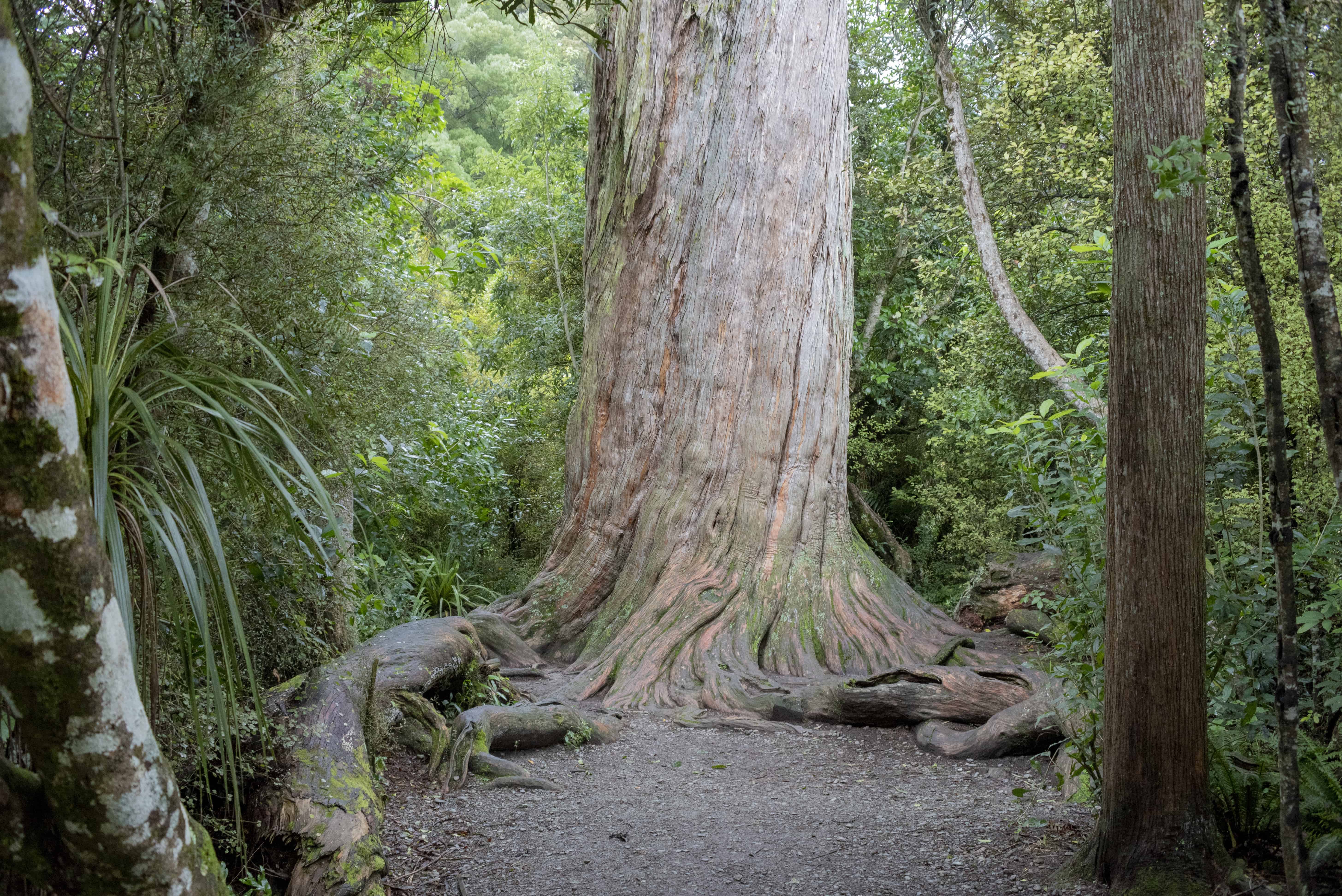Totara trees are native to New Zealand and belong to the species Podocarpus totara. They are evergreen conifers that can reach impressive heights of up to 25-30 meters and have a trunk diameter of 1-2 meters. Totara trees are known for their durability and resistance to rot, making their wood highly valued for construction, carvings, and traditional uses.
Totara trees have a distinctive fluted trunk and rough, reddish-brown bark. They are slow-growing and can live for over a thousand years, holding cultural and ecological significance in New Zealand’s forests.
Let’s delve deeper into totara trees to learn more about what the wood and what it is commonly used for.
10 Fun Facts About The Totara Tree
Here are 10 facts about the totara tree:
- Botanical Classification: The totara tree belongs to the species Podocarpus totara and is a member of the Podocarpaceae family. It is an evergreen coniferous tree native to New Zealand.
- Size and Growth: Totara trees are known for their impressive size and longevity. They can reach heights of up to 25-30 meters (80-100 feet) and have a trunk diameter of 1-2 meters (3-6 feet). Some ancient specimens are estimated to be over 1,000 years old.
- Habitat: Totara trees are found throughout New Zealand, primarily in lowland and coastal forests. They can also be found in higher-altitude regions, but they thrive in areas with mild temperatures and ample rainfall.
- Appearance: Totara trees have a dense, pyramidal shape when young, but as they age, their crowns become broader and more irregular. The leaves are small, narrow, and needle-like, arranged spirally on the branches.
- Bark and Trunk: The bark of the totara tree is rough and furrowed, with a reddish-brown to grayish-brown color. The trunk is often straight and has a notable fluted appearance, with deep vertical grooves.
- Wood Characteristics: Totara wood is highly valued for its durability, strength, and resistance to rot and insect damage. It is reddish-brown in color, with a fine grain and an attractive appearance.
- Traditional Uses: The totara tree holds significant cultural and historical importance to the Māori people of New Zealand. It has been traditionally used for constructing canoes, carvings, weapons, tools, and buildings, including meeting houses (wharenui).
- Ecological Importance: Totara trees play an essential role in New Zealand’s ecosystems. They provide habitat for a variety of bird species, including the native wood pigeon (kererū) and tūī, and their berries are an important food source for birds.
- Slow Growth: Totara trees are slow-growing, especially in their early years. It can take several decades for them to reach maturity and develop their characteristic size and form.
- Conservation Status: While totara trees are not considered globally threatened, some local populations have been impacted by land clearance and logging. Efforts are being made to protect and restore totara forests, recognizing their ecological significance and cultural value.
These facts provide a glimpse into the fascinating characteristics and cultural significance of the totara tree, highlighting its importance in New Zealand’s natural and cultural heritage.
Totara Wood Has A Wide Range Of Commercial Uses
Totara wood is a versatile and valued timber that has been traditionally used for various purposes. Here are some common uses of totara wood:
- Building and Construction: Totara wood is highly durable, resistant to decay, and has excellent structural properties, making it suitable for construction purposes. It has been used in the construction of houses, fences, bridges, and wharves.
- Carving and Woodworking: Totara wood is known for its workability and attractive grain patterns. It has been used for carving intricate designs, sculptures, and decorative objects. Traditional Māori carvings often feature totara wood.
- Boat Building: Totara wood has a long history of use in boat building due to its resistance to rot and marine borers. It has been utilized for constructing canoes, waka (traditional Māori watercraft), and small boats.
- Furniture: Totara wood is favored by furniture makers for its rich color and durability. It has been used to craft tables, chairs, cabinets, and other furniture pieces.
- Flooring and Cladding: Totara wood is sometimes used for flooring, decking, and cladding applications due to its durability and attractive appearance.
- Tool Handles: The strong and resilient nature of totara wood makes it suitable for tool handles such as axes, hammers, and chisels.
- Cultural and Spiritual Significance: Totara wood holds cultural and spiritual importance in Māori culture. It has been used in the construction of meeting houses (wharenui) and carvings representing ancestral figures.
It’s important to note that totara wood is a slow-growing tree, and sustainable harvesting practices should be followed to ensure its long-term availability. Additionally, regulations regarding the harvesting and use of totara wood may vary depending on the country or region, so it’s advisable to check local guidelines and restrictions before using it.

